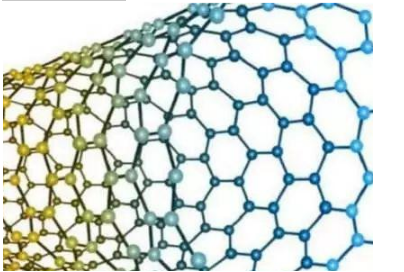What are the applications of programmable perovskite nanowires in composites?
One-dimensional nanomaterials with highly anisotropic optoelectronic properties are available for energy harvesting, flexible electronics, and biomedical imaging equipment. In materials science and nanotechnology, three-dimensional graphics methods can be used to accurately assemble nanowires with locally controlled composition and orientation to enable new optoelectronic device designs.
Perovskite nanowire-block copolymer supramolecular nanocomposite consisting of luminescent colloidal bismuth lead perovskite (CsPbX3, where X = Cl, Br I), suspending bright nanowires in polystyrene-poly The alignment of the nanowires is defined in a styrene-isoprene block copolymer matrix and using a program print path. The scientist created optical nanocomposites with highly polarized absorption and emission characteristics.
To highlight the versatility of this technology, several devices have been produced, including optical storage, encryption, sensing, and full-color displays, which are now published in Scientific Progress.
By varying the SIS concentration, scientists formed different inks composed of nanowires to develop the shear thinning behavior and viscoelastic response required for direct ink writing. The ordered hexagonal microdomains of the SIS block copolymer filaments were revealed by transmission electron microscopy (TEM) and small angle x-ray scattering (SAXS) measurements, and the printed cis cspbbr3 nanocomposites were highly aligned along the printing direction.
This mode approach allows programmable nanowire orientation to be printed on optical composites to affect polarization and angular emission. In the direct ink writing process, the g code generated by MatLab, Slic3r, and CIMCO was used to generate a print path, and a glass nozzle was used to form a nanocomposite structure on the glass coverslips.
Demonstrating the application of digital program polarization anisotropy in 3D printed nanocomposites, the researchers first designed a pixel (200 x 200m) of a grayscale image in a 3-bit region. Using this technology, scientists have implemented advanced graphics structures as optical memories for writing data storage devices that read multiple times (worms). The printing structure can realize the secure encryption of the encrypted memory by printing a multi-layer structure and storing different optical information in each layer. To prove the principle, the letter "L-I-G-H-T" is made into a five-layer device in which each letter is viewed from a different height.
The letters "H" and "I" are printed in a random direction, and each letter in the transparent matrix is selectively observed using a polarizer at an appropriate angle. In addition, scientists have demonstrated the possibility of encrypting the emission pattern by stretching the material, such as the letter h.
The possibility of creating dynamic camouflage in a similar arrangement of skin materials in which different optical patterns appear and disappear during mechanical stretching is envisaged. This concept was later extended to simulate RGB (red, green, blue) quantum dots that are widely used for color mixing. To this end, the researchers used an anion exchange reaction to obtain a halide perovskite composed of red and blue nanowires.
A tunable multi-channel color display was created using multi-material 3d printing. Although perovskite nanowires are not the most suitable material for display applications, this study highlights the ability to programmatically control the composition and alignment of nanowires through digital assembly.
The tunable spectral response of the multiplexed RGB array and its corresponding color range are shown in the CIE (commission on lighting) chromaticity diagram, demonstrating the simple design provided by the printed display for color adjustment. Unlike liquid crystal displays that rely on conventional quantum dot color filters, the printed films used in this study use direct polarized photon downconverters, also known as "active" color filters.

The unique anisotropic photoelectron properties of semiconductor nanowires are caused by quantum effects and dielectric effects, and are widely used in the fields of electrons and photonics. By accurately singulating one-dimensional nanomaterials into planar and three-dimensional structures, new ways to assemble optoelectronic devices can be opened.
Compared to many types of semiconductor wires currently reported, bismuth lead halide nanowires (CsPbX3) having a perovskite crystal structure have many advantages in optoelectronic applications. The lead halide perovskite nanocrystals have ultra-bright characteristics compared to conventional colloidal semiconductor nanocrystals having a core-shell structure and exhibit nearly uniform quantum yield without a package.
Materials scientists can modify the halide composition and band gap of perovskites to form bright, tunable emission over the entire visible spectrum. Perovskite nanowires have unique material properties and high quantum yields, and have potential applications in the fields of LCD backlighting, spectral splitting, polarized light detectors and optical pumping lasers. Researchers have explored several planar and three-dimensional graphical methods, including extrusion-based 3D printing by direct ink writing (DIW), forming a structure of cellulosic fibers and arranging them in a hydrogel matrix.
However, the general application of DIW in the functional structure of photonic devices remains to be explored. In this study, a polarized optical structure composed of a matrix of perovskite nanowire-filled block copolymers was designed, printed and characterized. To this end, a nanocomposite ink was developed in which a perovskite nanowire bundle was embedded in a cylindrical microphase polystyrene-polystyrene (SIS) block copolymer matrix. Other anisotropic materials, including metals, semiconductors, and block copolymers, as well as dielectric nanowires, are expected to be patterned in a similarly programmed manner using this method.
The researchers intend to improve the synthesis and printing of nanowires to achieve higher display application efficiencies. In this way, it has been demonstrated that direct-write nanocomposite inks composed of perovskite nanowire-filled block copolymer matrices can be used in many The design of the optoelectronic device is designed in the design. The composition and arrangement of nanowires has been programmed to create optical nanocomposites for applications such as information storage, encryption, mechanical optical sensing, and optical displays. This new discovery will provide a way to quickly design and fabricate functional devices using anisotropic components wrapped in a soft polymer matrix.
If you want to know more, our website has product specifications for the programmable perovskite nanowires, you can go to ALLICDATA ELECTRONICS LIMITED to get more information

